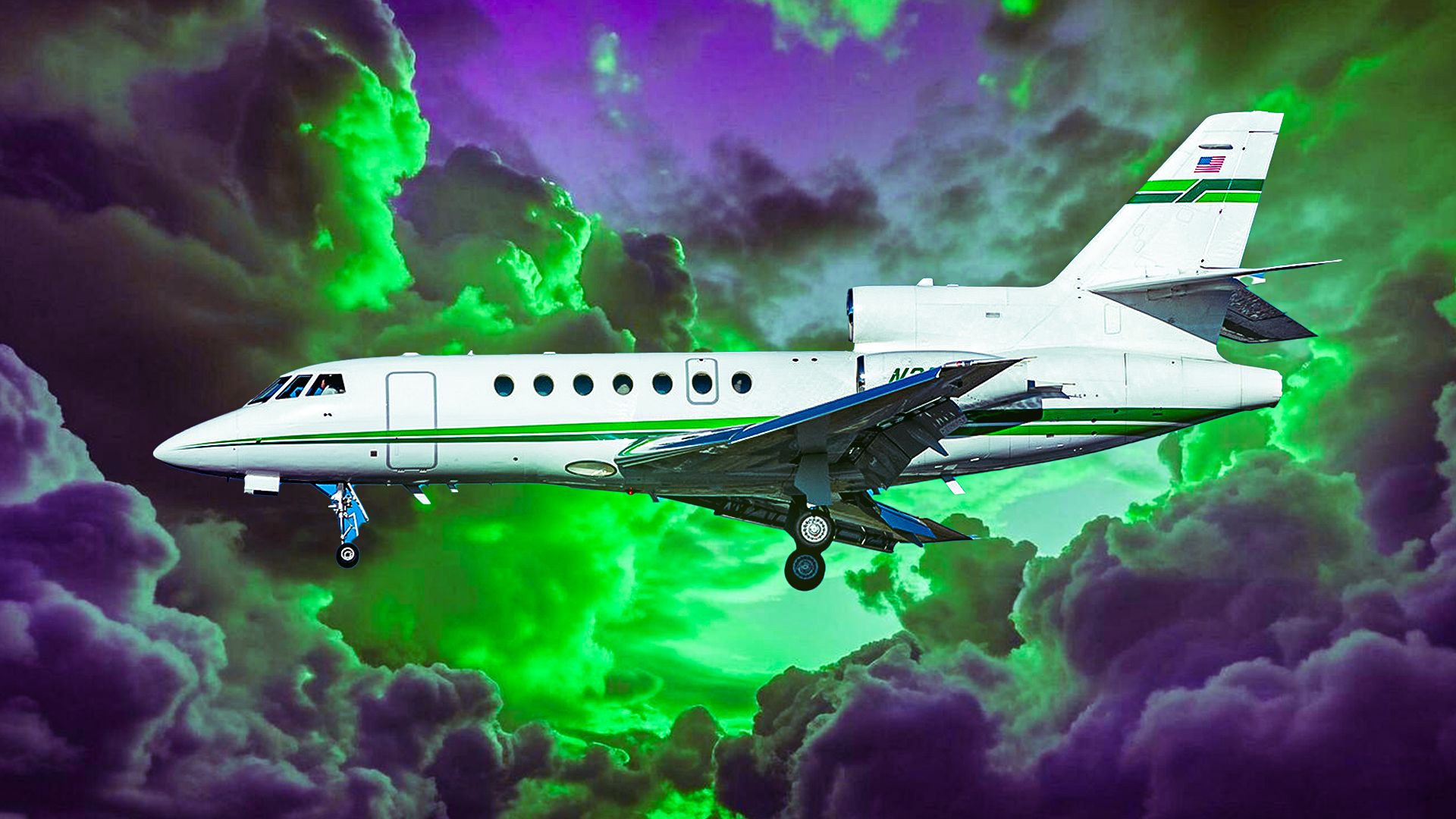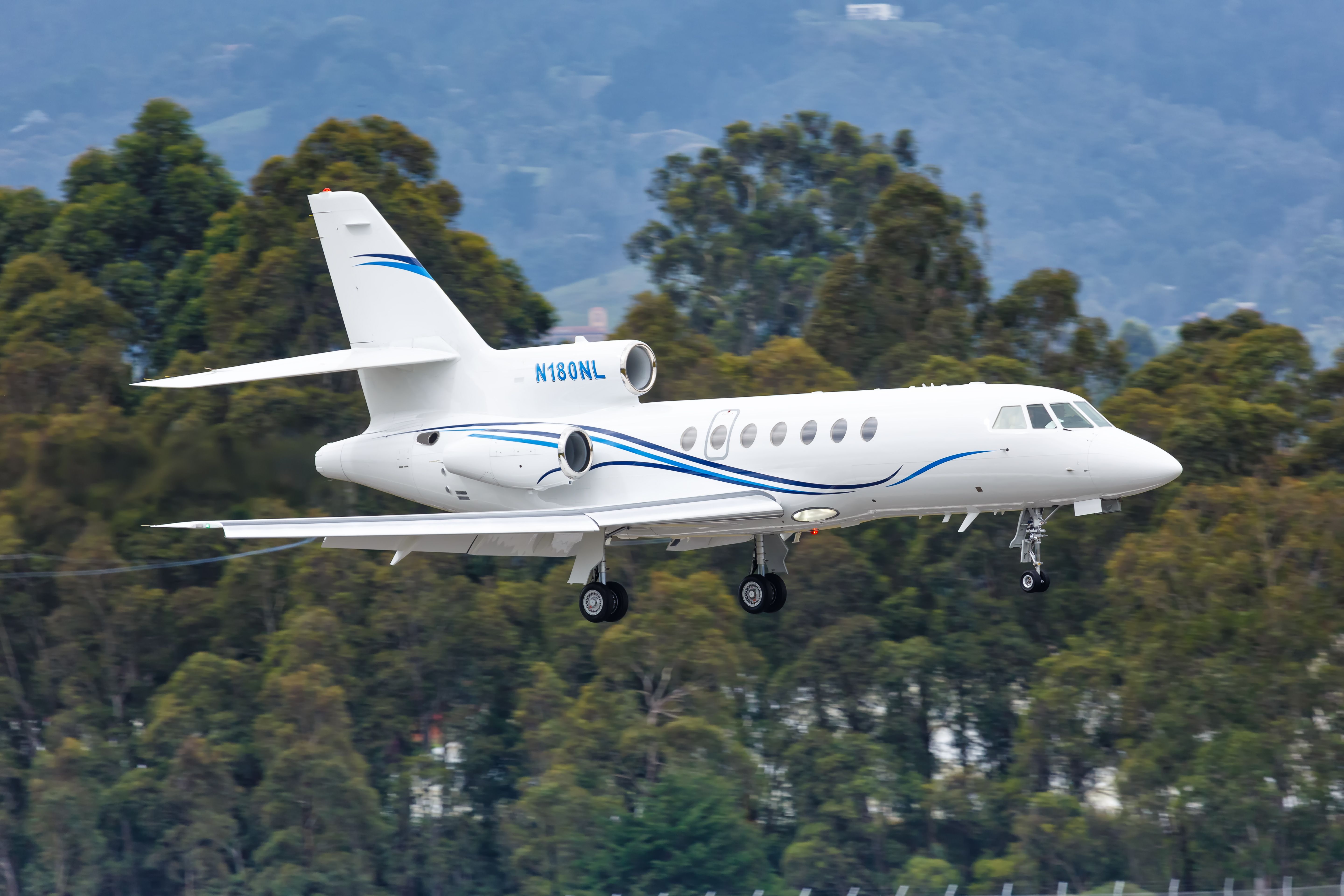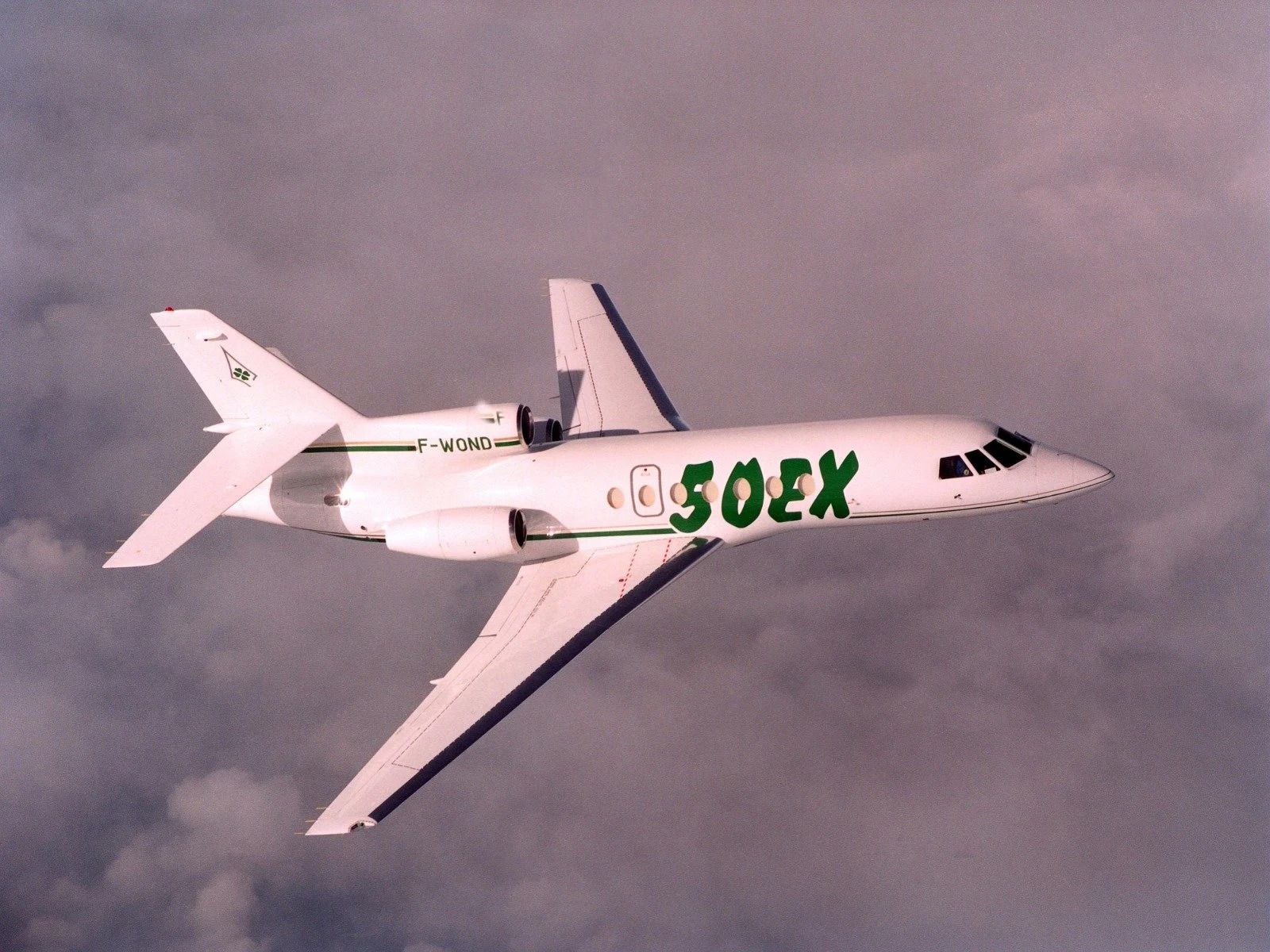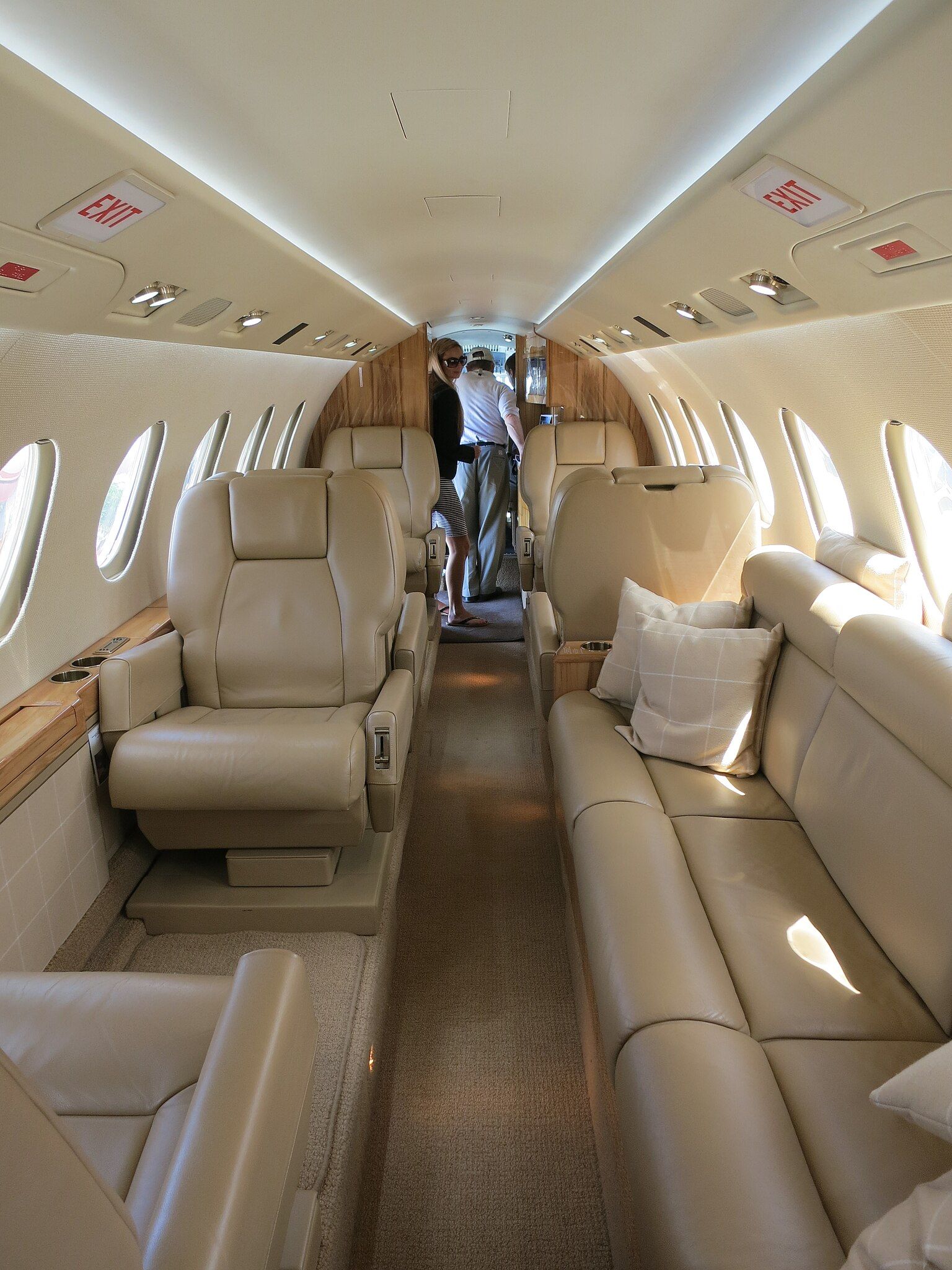Summary
- Falcon 50EX debuted in 1997, with modern avionics and faster speed at 548 knots compared to Falcon 50’s 480 knots.
- Dassault introduced the Falcon 50EX with improved engine thrust, fuel efficiency, and maintenance costs over the Falcon 50.
- The Falcon 50EX cockpit includes upgraded technology, such as the ADC 80 air data computer and optional high-mach blended winglets.
Piloted by Hervé Leprince-Ringuet and Gérard Joyeuse, the Dassault Falcon 50 completed its first flight in 1976. The Falcon 50’s history, therefore, dates back close to five decades. It was the first bizjet ever to complete a transatlantic flight, too. The Falcon 50 was developed into various models, such as the Falcon 50 Susanna, which was specifically modified for Iraq. This obscure variant also gained some traction as it was involved in the USS Stark incident.
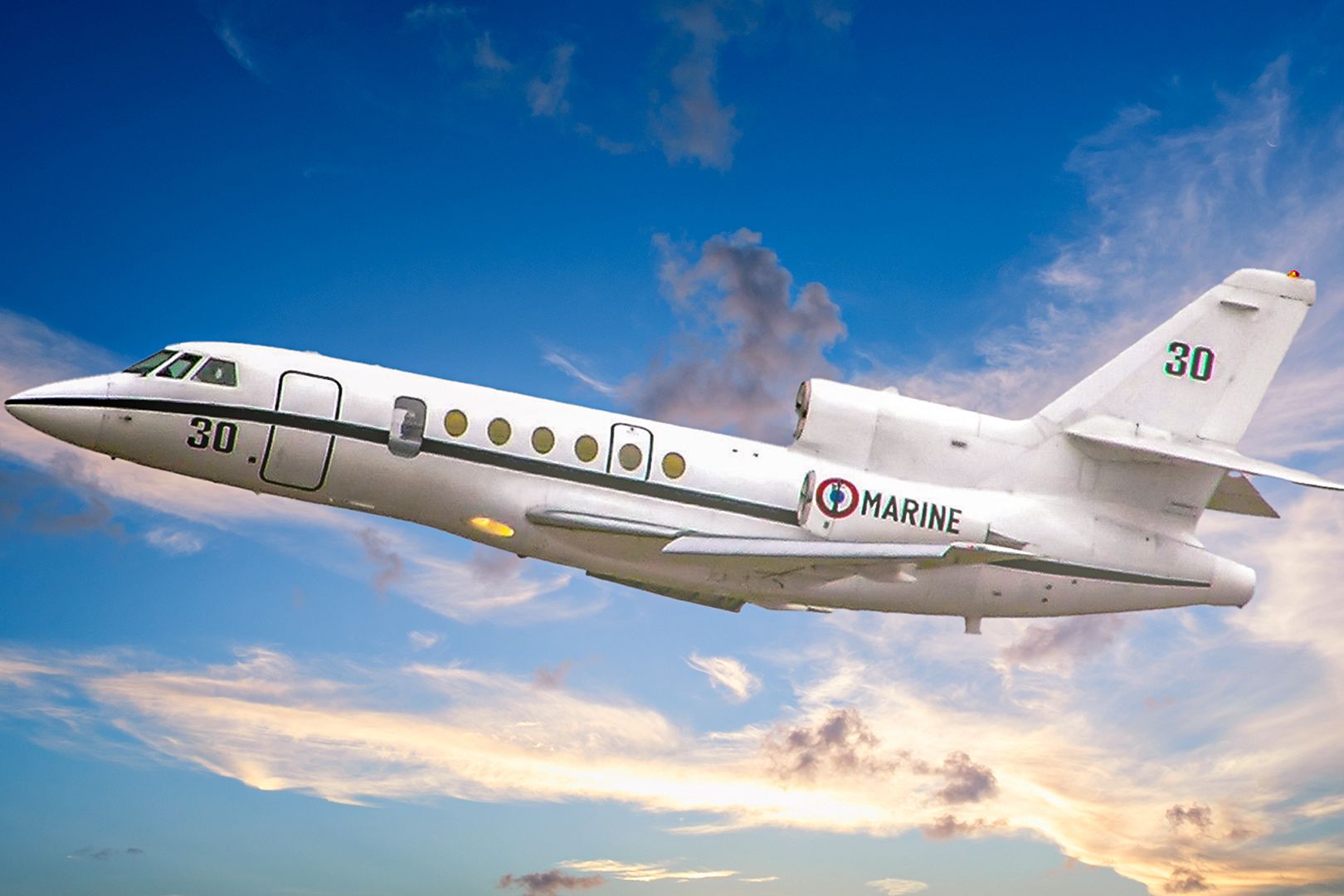
Related
Adding A Third Engine: A Look At The Dassault Falcon 50
The Falcon 50 was produced for over 30 years.
At the opposite end of the spectrum is the Dassault Falcon 50EX, one of the most manufactured aircraft of the Dassault Falcon 50 family. Dassault announced this variant on April 26, 1995, as it sought to replace the earlier models of the Falcon 50. And after it took to the skies, its unique capabilities helped it gain epithets such as “a major player to aeronautics”. With its unique, wonderful abilities, it would be hard to argue against such labels. In this article, we are going to delve into what has made the Falcon 50EX successful over the close to three decades it has been operating.
History of the Falcon 50 EX
The Falcon 50 – the aircraft that was developed into the Falcon 50 EX – received their type certification in 1979. A maritime surveillance and environmental protection version of the Falcon 50 known as the Gardian 50, had also been developed by the manufacturer. But Dassault wanted to make something even better and along came the Falcon 50 EX.
Photo: Markus Mainka | Shutterstock
It was Serge Dassault, who announced the launch of the Falcon EX, and the first deliveries were planned for the beginning of 1997. About this aircraft, which was to replace the Falcon 50, Dassault writes:
“ Compared to the Falcon 50, the new aircraft flew higher and faster (it could reach 41,000 feet in 23 minutes), its range increased (6,050 km / 3260 nm at Mach 0.75), its avionics were modernized (Collins Proline 4). It was equipped with three new engines, the AlliedSignal TFE 731-40 with increased thrust (1,680 kg / 3,704 lb each), improved specific fuel consumption (reduction by 7%) and lower maintenance costs. The Falcon 50 EX made its first flight at Mérignac on April 10, 1996, piloted by Jean Bongiraud and Etienne Faurdessus.”
A comparison of the specifications of the Falcon 50 EX with the model it was developed from
As highlighted previously, the Falcon EX was faster, had improved range, and had upgraded avionics compared to the Falcon 50. Let’s compare these two aircraft.
| Specification | Falcon 50EX | Falcon 50 |
|---|---|---|
| Length | 60 feet eight inches | 60 feet eight inches |
| Height | 22 feet nine inches | 22 feet nine inches |
| Wingspan | 61 feet eight inches | 61 feet eight inches |
| Maximum Speed | 548 knots (631 miles per hour) | 480 knots (552 miles per hour) |
| Cruise speed | 488 knots (561 miles per hour) | 431 knots (495 miles per hour) |
| Range | 3,260 nautical miles (3,751 miles) | 3,075 nautical miles (3,538 miles) |
| Ceiling | 49,000 feet | 31,000 feet |
Photo: Dassault
Some distinctions that separate the Falcon 50(EX) from other aircraft
In 2023, Dassault Aviation posted a revenue of $5 billion. Although not all of Dassault’s revenue stems from the success of the Falcon 50(EX) alone, the Falcon 50 has some unique capabilities. Some of these have been highlighted below:
- It was the company’s first trijet business aircraft.
- The first of Dassault’s aircraft with supercritical wings
- The first business aircraft to fly transatlantic
What was the technology used in the Falcon 50EX?
The cockpit of the Falcon 50 EX is fitted with the ADC 80 air data computer. As a retrofit, operators can also use the High Mach blended winglets that Dassault has developed for this aircraft, which can take off within 1500 meters and land within 700 meters.
| Engine | Honeywell TFE 731-40 turbofan |
|---|---|
| Power | 16.46 kN (3,700 lb) thrust each |
| Rate of climb | 10.433 m/s (2,053.7 ft/min) |
Some of the other features of the Falcon 50 EX include:
- 3 DEEC (Digital Electronic Engine Control)
- Advanced autopilot system and digital flight control technology
- An Auxiliary Power Unit (APU) installed as standard equipment
- Enhanced safety and situational awareness for flight crew.
The comfort of the cabin of the Falcon 50 EX adds to its success
Stepping inside the Falcon 50EX envelops you in a warmth of luxury and comfort. The cabin of this iconic aircraft of the Dassault Falcon family has been designed with features that help maximize space and offer a wealth of tranquility for those onboard.
You can also choose from a spectrum of seating configurations, including club and divan arrangements. The interior of the Falcon 50 EX has been exquisitely crafted with high-quality materials, giving it a feel that not many aircraft of its class have.
All in all
The Falcon 50EX was later developed into other successful models, such as the Falcon 900 and the Falcon 2000. These aircraft proved to be as successful as, if not more successful than, the Falcon 50 (EX).
What do you think makes the Falcon 50 EX so successful? Let us know in the comments below.

